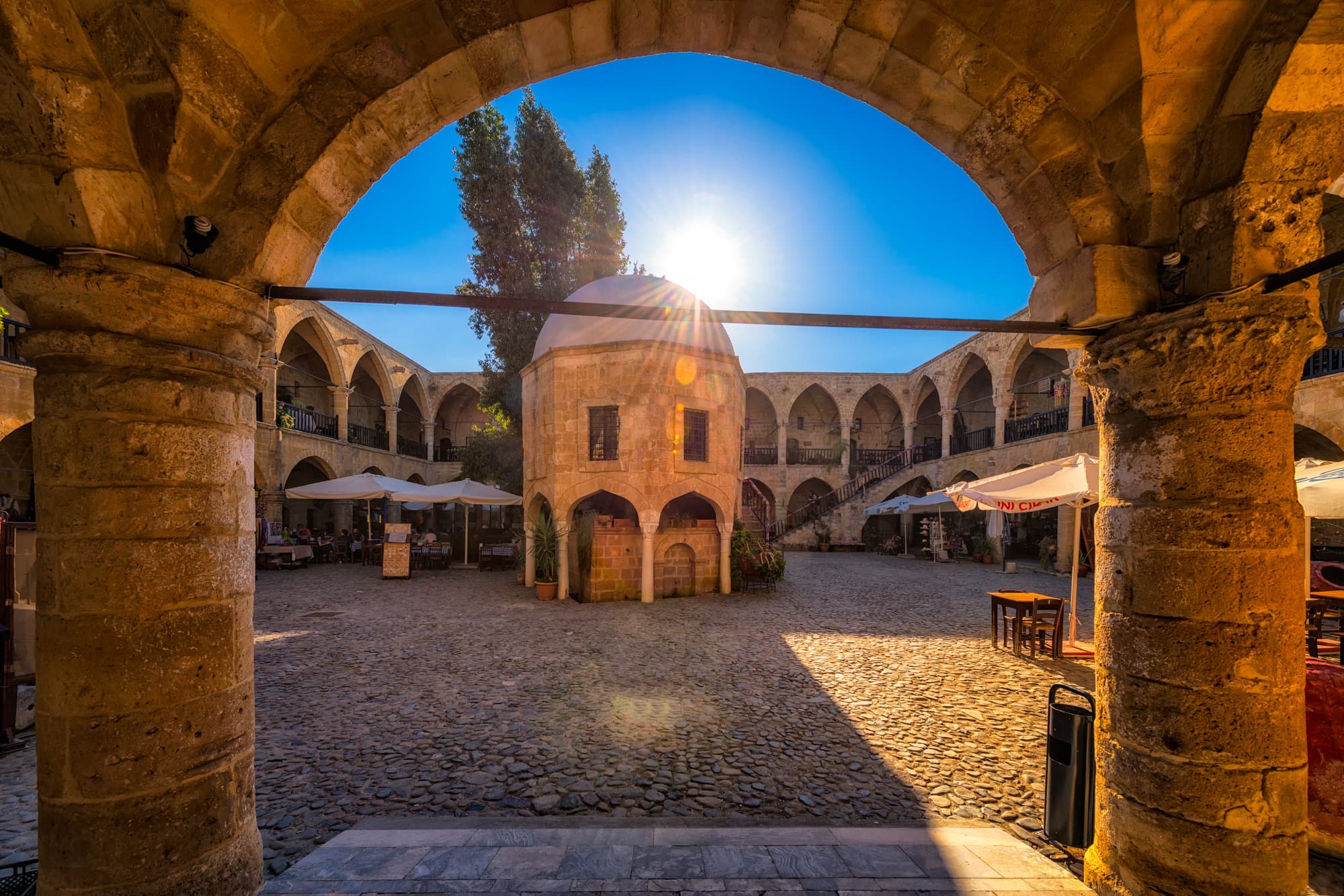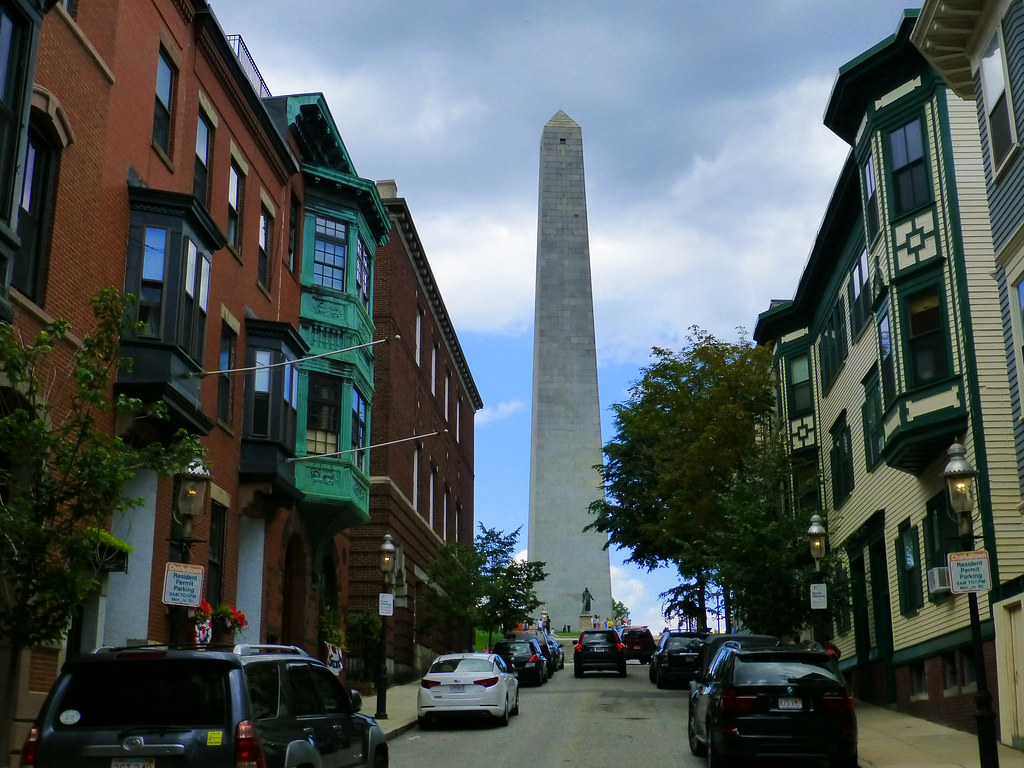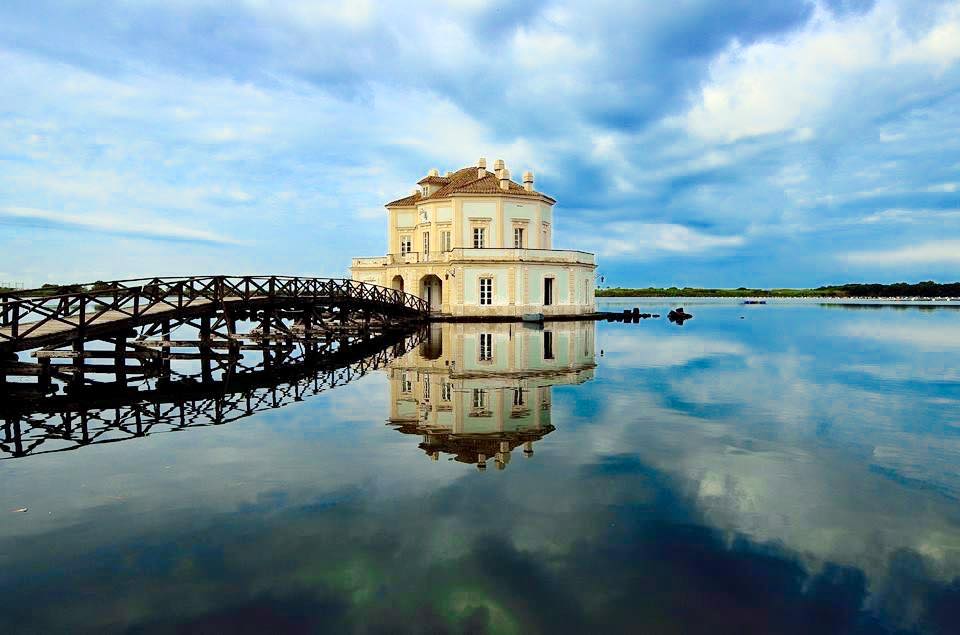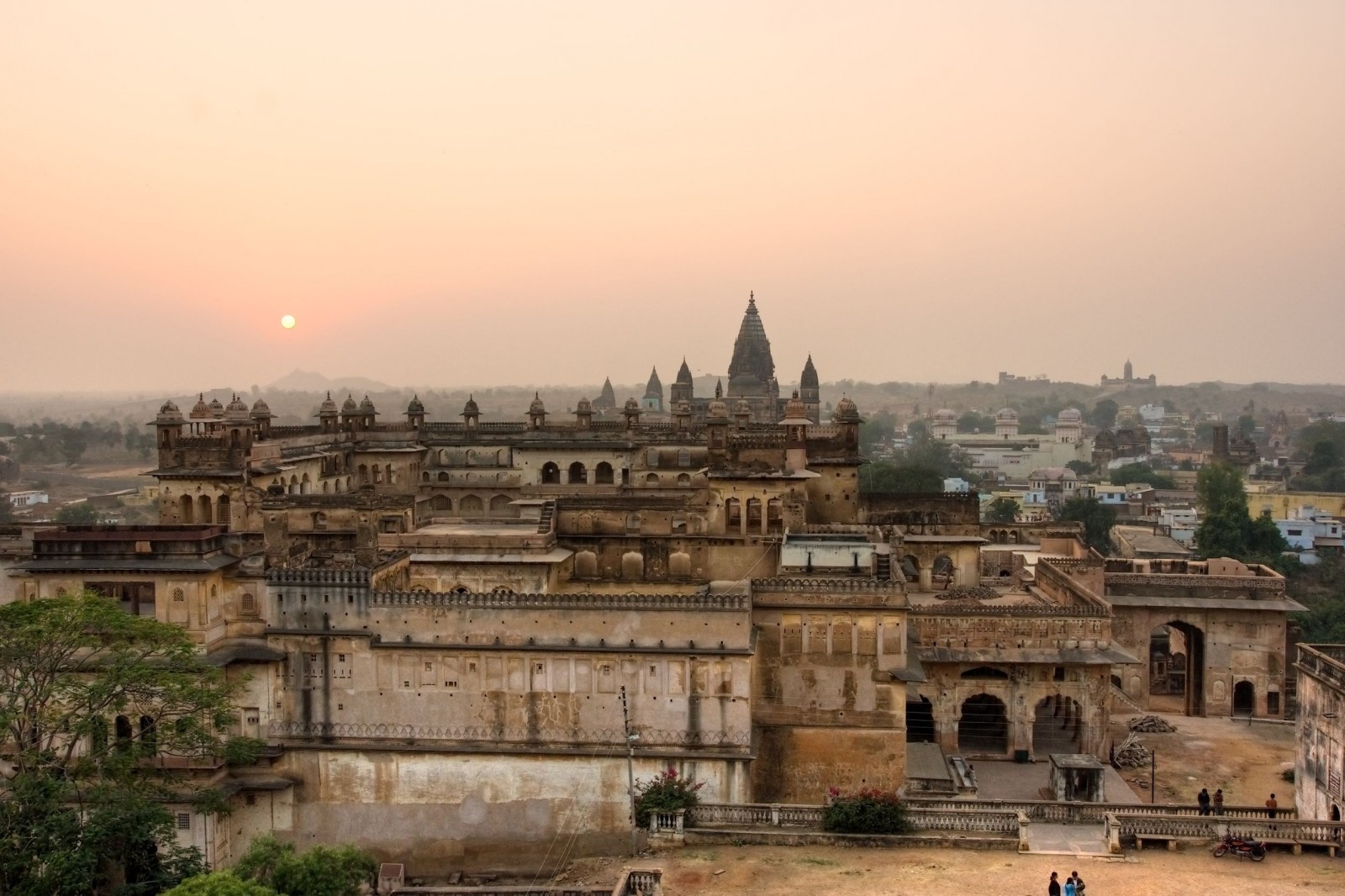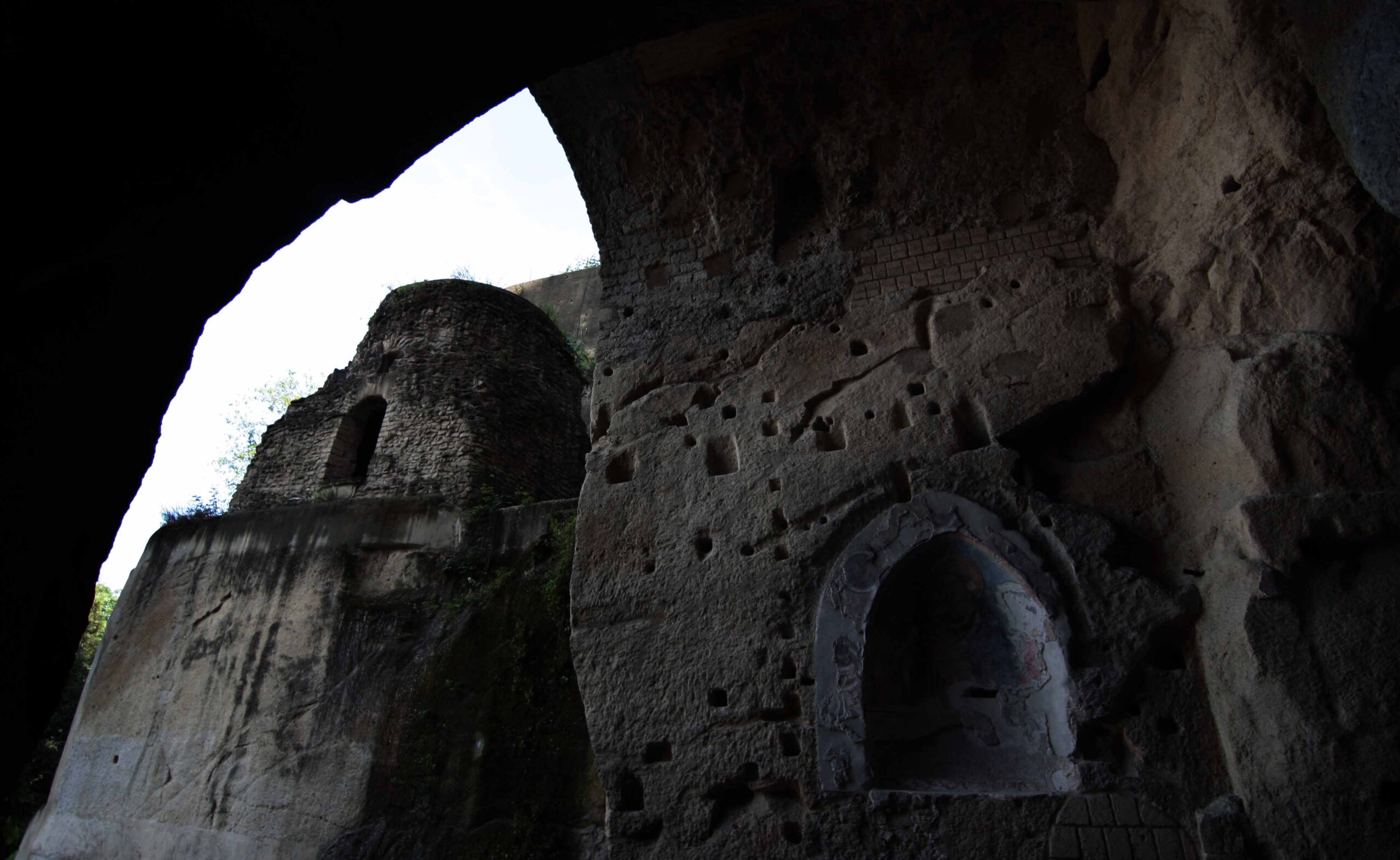The Buyuk Han is located in the northern part of Nicosia and is the largest caravanserai on the island. It is an architectural work of great value and according to historical documents, the building was constructed in 1572 under the auspices of Muzaffer Pasha, the first Ottoman governor of Cyprus, and was modelled on the Koza Han in Bursa.
At that time it served to provide refreshment to merchants, who on their arrival, found not only an inn in which to eat but also a fountain in which to perform ablutions, the mosque in which to pray and some spaces to rest.
The inn has two floors and a more or less square shape; its dimensions are 50,67 m by 45,25 m. There is a large inner courtyard that is surrounded by the rooms that have vaulted colonnades in front of them. There are 68 rooms on both floors, with those on the ground floor historically used for commerce and those on the first floor historically used for accommodation. There are also 10 single-storey shops behind the colonnade at the eastern entrance.
Entrance to the inn is through two doors to the east and west. The main door is located on the eastern side and opens onto Asmaaltı Square. There are hexagonal or octagonal stone chimneys placed above the fireplaces in each room; Rupert Gunnis found these chimneys idiosyncratic and stated that they may have come from the medieval building that once stood on the site.
In the middle of the inner courtyard is a special type of masjid known in Turkish as a köşk mescidi ("mansion masjid"). The stones used to build this masjid are believed to have come from other buildings, according to Bağışkan. The masjid corresponds to similar masjids built in Anatolian caravansarai such as Koza Han in Bursa or Rüstem Paşa Hanı in Edirne during the 13th-17th centuries. In 1927, George Jeffery noted that the masjid was used as a barn.
There is a tomb located to the southwest of the masjid. This tomb is traditionally believed to belong to a high-ranking person who died while worshiping in the masjid or to Muzaffer Pasha himself who is traditionally believed to have been executed. However, Bağışkan draws attention to the appointment of the pasha in Tripolitania and says it is a myth that he is buried there. The tomb was historically used as an offering place, although this use ended long ago.
Inside what now has the appearance of a fortress are shops, bars and restaurants, galleries of artisans of typical artefacts, paintings and ceramics. This building is also very impressive at night, thanks to a special lighting and events that are organized inside, including live music performances and folk dance.
